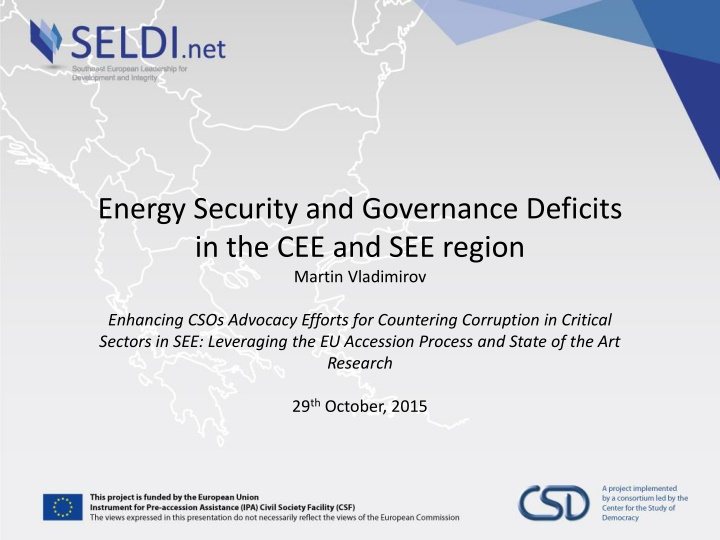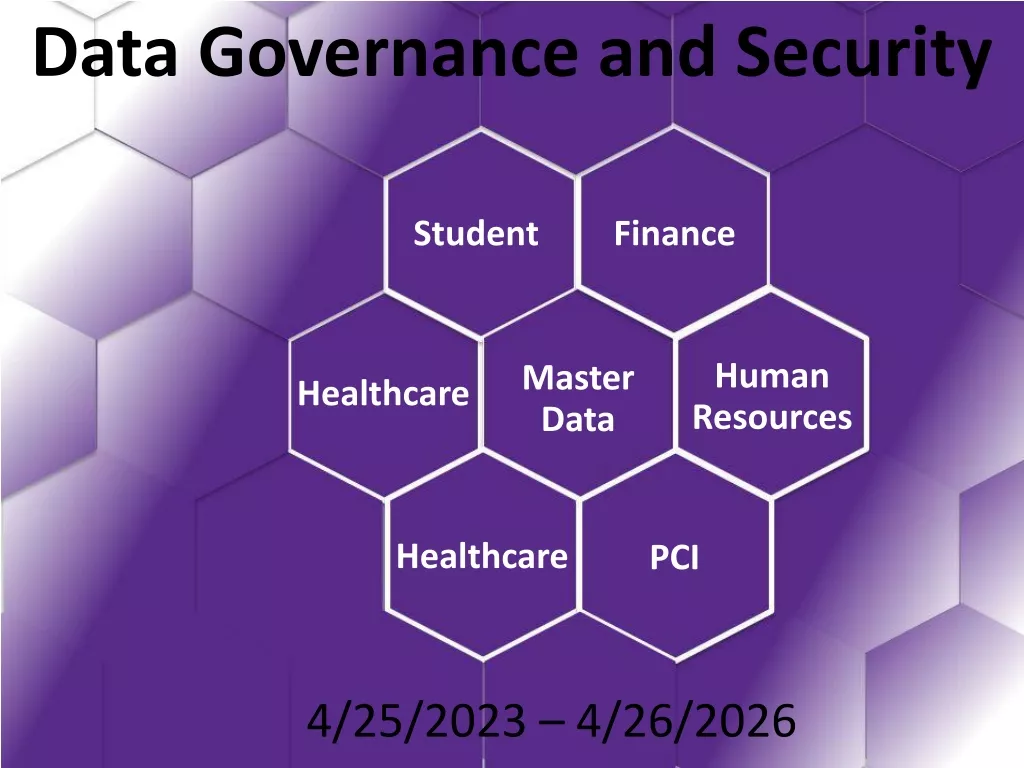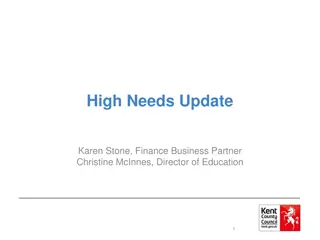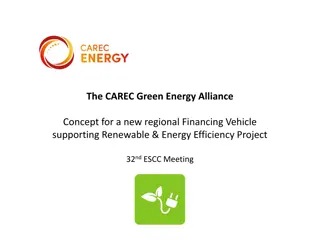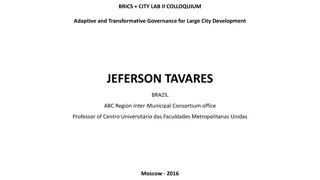Energy Security and Governance Deficits in CEE and SEE Region
This analysis dives into persistent energy security risks and governance deficits in the Central and Southeastern Europe region, focusing on key policy objectives such as diversification of energy supply and investment in energy efficiency. The study emphasizes the importance of countering corruption, leveraging the EU accession process, and addressing energy poverty to enhance the overall energy landscape and governance structure.
Download Presentation

Please find below an Image/Link to download the presentation.
The content on the website is provided AS IS for your information and personal use only. It may not be sold, licensed, or shared on other websites without obtaining consent from the author.If you encounter any issues during the download, it is possible that the publisher has removed the file from their server.
You are allowed to download the files provided on this website for personal or commercial use, subject to the condition that they are used lawfully. All files are the property of their respective owners.
The content on the website is provided AS IS for your information and personal use only. It may not be sold, licensed, or shared on other websites without obtaining consent from the author.
E N D
Presentation Transcript
Energy Security and Governance Deficits in the CEE and SEE region Martin Vladimirov Enhancing CSOs Advocacy Efforts for Countering Corruption in Critical Sectors in SEE: Leveraging the EU Accession Process and State of the Art Research 29thOctober, 2015
Key Energy Security Risks Large energy expenditure intensity Unsustainable energy import dependence Low energy efficiency Widespread energy poverty Governance Deficits (political bottleneck in tackling energy security risks)
Energy Security Risks Scores 1980-2013 Source: IIESR, CSD
Lack of Energy Security Improvements in the SEE and CEE region
Energy Inefficiency and Competitiveness Source: Eurostat
Persistent Energy Dependence Source: CSD
The Dependence/Affordability Nexus Country Gas Import Dependency Share of Russia in gas imports Share of Russia in gas consumption Total Gas Average Gas Price ($ per 1000 cubic meters) Consumption (bcm) 100% 100% 98.40% 98.00% 60.20% 55.60% 83.50% 58.60% 60.20% 55.60% 82.20% 57.50% 0.87 3.6 5.4 8.4 485 476 429 503* Slovenia Greece Slovakia Czech Republic 90.00% 78.90% 78.20% 72% 24.30% 99.00% 55.00% 100.00% 100.00% 100% 76.10% 100% 81.30% 100% 56% 100% 100% 100% 90% 60% 78.20% 58.60% 24.3% 56.0% 55.0% 100.0% 100.0% 2.6 8.5 8.6 16.7 12.5 45.6 45 3.25 0.16 417 379 435 403 399 406 385 400 460 Bulgaria Austria Hungary Poland Romania Turkey Ukraine Moldova Macedonia 82.40% 81% 100% 81% 82.4% 63% 2.91 11.13 457 431 Serbia Average Source: CSD
Key Policy Objectives Diversification of energy supply Expansion of domestic energy production Investment in residential and commercial energy efficiency Liberalisation and regional integration
Research Areas Regulatory and legislative framework consistency Governance and financial development of energy state-owned enterprises (SOEs) Management of large energy infrastructure projects Public Procurement
Regulatory Reform Energy market liberalization Independence of energy and competition regulatory bodies Implementation gap in introducing the EU energy acquis Case-studies of regulatory capture by energy interest-groups for their own interests
Corporate Governance of SOEs Financial Management Capacity Corporate governance standards on reporting and human resources Operational independence of SOEs Accountability for management decisions
Financial Management of SOEs the better case EPS 1.40 1.20 1.00 0.80 0.60 0.40 0.20 0.00 2009 2010 2011 2012 2013 -0.20 Current Ratio Quick Ratio Liquidity Ratio Total Debt to Total Assets Ratio Long-term Debt to total assets ratio Return on Equity Return on Assets Source: Annual Reports by EPS
Financial Management of SOEs the better case (EPCG) 4 3.5 3 2.5 Current ratio Quick ratio 2 Liquidity ratio Debt ratio 1.5 Long trem debt ratio 1 0.5 0 2010 2011 2012 2013 2014 Source: Annual Reports for EPCG
Financial Management of SOEs the bad case (NEK in Bulgaria) NEC 1.60 1.40 1.20 1.00 0.80 0.60 0.40 0.20 0.00 2007 2008 2009 2010 2011 2012 2013 -0.20 Current Ratio Quick Ratio Liquidity Ratio Total Debt to Total Assets Ratio Long-term Debt to total assets ratio Return on Equity Return on Assets Source: Annual Reports for NEK
Red Flags Low current, liquidity and quick ratio means payment trouble Large debt to assets ratio high leverage and lack of long-term sustainability Negative return on assets and equity means a loss-making company
Governance Deficits of Large Infrastructure Projects Conflicts of interests and political brokerage Lack of independent technical and economic analysis Politically-driven energy projects decisions Mismanaged public procurement procedures benefitting a specific interest Case Studies
Public Procurement Standards Compliance with market competition rules Exclusive criteria due to national security, technical or financial capacity Conflicts of interests and political patronage Concentration of public procurement in few companies Matching of successful bidders with political parties
